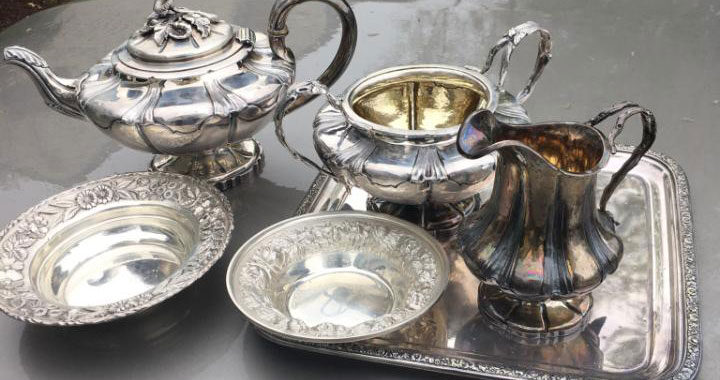Silver is a beautiful metal used for centuries to create stunning decorative items and jewelry. If you are a silver collector, it is imperative to accurately determine the value of silver. In this article, we will explore the techniques used to assess the worth of different types of silver.

Sterling Silver vs. Pure Silver.
Sterling silver is an alloy of metals that is used to make jewelry. It is not a pure metal, combining pure silver and other metals like copper, zinc, or nickel. Sterling silver is 92.5% pure silver and 7.5% other metal. This makes the metal more robust and more useful for metalwork.
Pure silver is 99% pure and malleable in nature, sometimes making it difficult to shape into ornaments. Pure silver is also known as fine silver and can be identified by hallmarks like .999, 99.9, or 999, which indicate that it is composed of a single soft metal. Pure silver also does not tarnish when exposed to air or sunlight.
How to Identify Sterling and Pure Silver?
A magnet test is The easiest way to identify pure and sterling silver. Most precious metals, including silver, are nonmagnetic. A magnet will not be strongly attracted to pure silver, but it will be attracted to the other metals mixed in sterling silver.
The test is the smell test. Since pure silver has no odor, if you smell a metallic odor or the scent of sulfur, it is likely sterling silver.
Which is More Valuable to Silver Collectors?
Pure silver is worth more than sterling silver because of its lesser consistency than other metals. However, the higher value of silver lies in its consistency. Pure silver is too soft to be used in jewelry, so it is often mixed with other metals. Antique silver dealers looking to sell or buy jewelry or other silver items prefer pure silver. For investors investing in precious metals, pure silver is a more valuable and profitable investment.
The ultimate worth of your silver flatware set will depend on its purity, which can only be identified by trusted buyers. While pure silver is more valuable than sterling silver, it is essential to consider its intended use. For jewelry-making and decorative items that require durability, sterling silver may be the preferred choice. However, pure silver is a more valuable and profitable option for investors or antique silver dealers.
In conclusion, identifying different types of silver and determining their actual worth requires knowledge of the metal’s purity and composition. Using the techniques discussed in this article, you can accurately determine the value of your silver items and make informed decisions when buying or selling silver.







